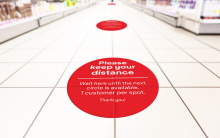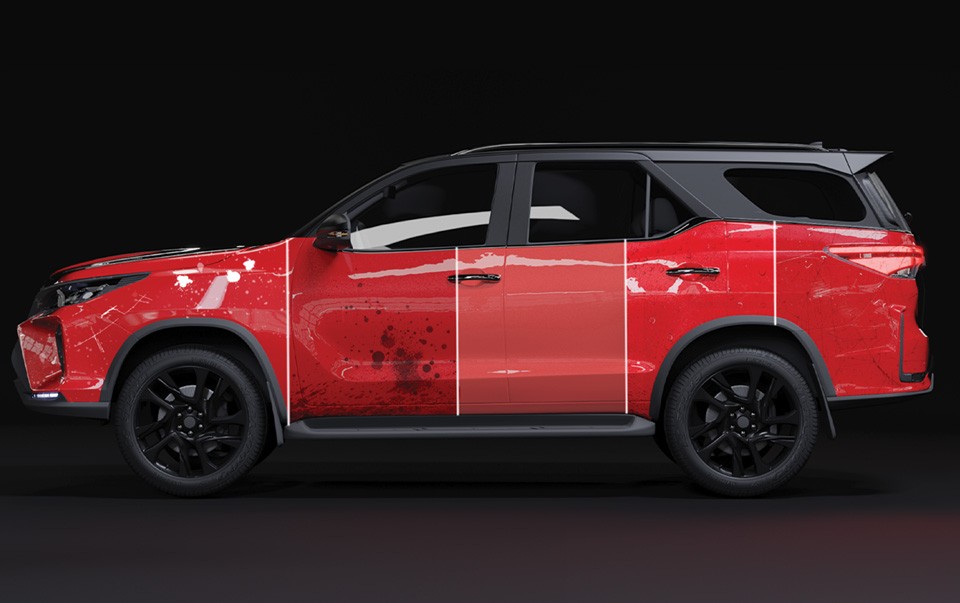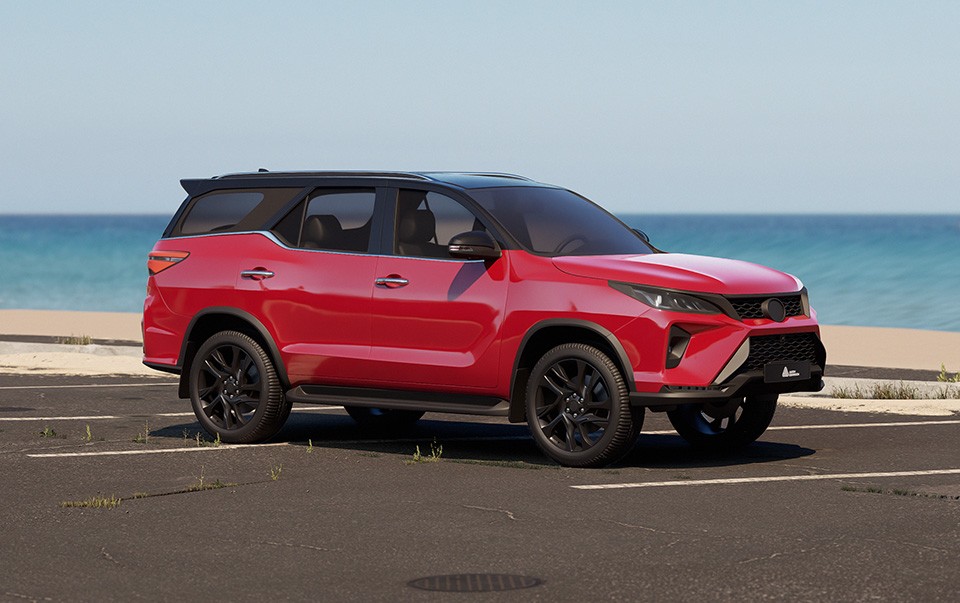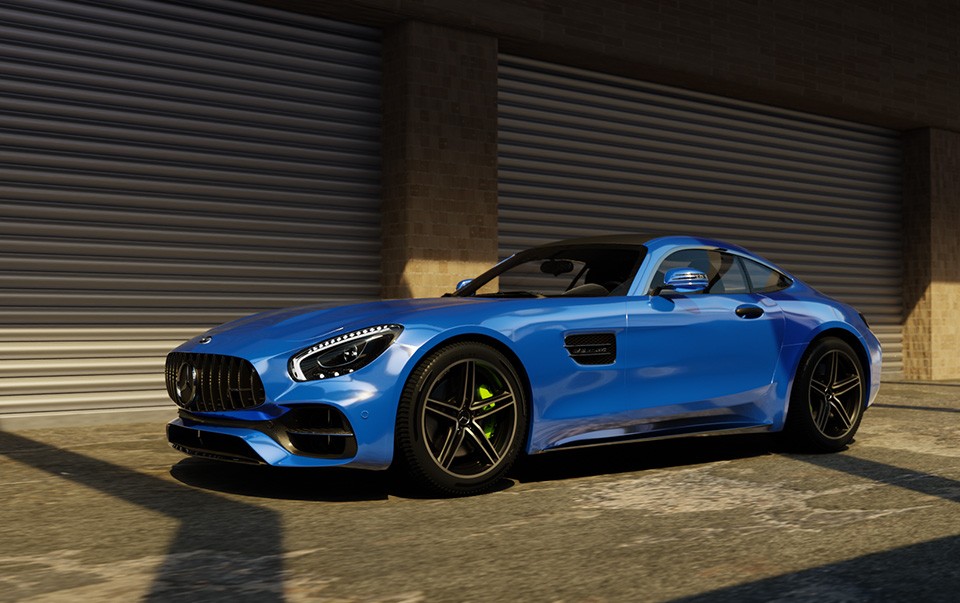1. What is a Paint Protection Film?
Paint Protection Film (PPF) is a clear, thermoplastic urethane film applied to the exterior of a vehicle to protect the paint from stone chipping, bug spatter, bird droppings, and other environmental contaminants.
2. How does a PPF work?
PPF act as a sacrificial layer that absorbs the impact and prevents damage to the vehicle’s paint. It’s self-healing to a certain extent with minor scratches disappearing over time.
3. Is PPF only for new cars?
No, PPF can be applied to both new and used vehicles. It is often used to preserve the appearance of a vehicle and maintain its resale value.
4. Can PPF be removed cleanly?
Yes, Our PPFs have a long-term removable adhesive and it can be safely removed without damaging the underlying paint. However, professional removal is recommended to avoid any adhesive residue. Please ensure vehicle has original OEM paint and it’s not repainted outside.
5. Does PPF affect the vehicle’s appearance?
When applied correctly, PPF is virtually invisible and doesn’t alter the appearance of the vehicle. It retains the original color and shine of the paint. It actually enhances the vehicle’s appearance in terms of gloss up to some extent.
6. How long does PPF last?
The durability of PPF varies, but it generally lasts several years. High quality PPF can withstand harsh weather conditions and UV exposure for an extended period. We have a range of products that can offer warranty as low as 3 years and can go up to 10 years
7. Can PPF be applied to any part of the vehicle?
It is recommended to get PPF applied to at least the high-impact areas such as the front bumper, hood, fenders, and mirrors. However, it can be applied on the full vehicle for comprehensive protection.
8. Is PPF resistant to environmental elements?
Yes, PPF is designed to resist environmental elements like UV rays, pollution, bird droppings, tree sap, and other contaminants, providing a protective barrier of the vehicle’s paint.
9. Can PPF be waxed or polished?
Yes, PPF can be treated like regular paint when it comes to waxing and polishing. However, it’s not recommended from the manufacturer and abrasive polished should be avoided to prevent the damages to the film. It will void the warranty on the product.
10. Is PPF resistant to rock chips and scratches?
Yes, one of the primary purpose of PPF is to protect the vehicle’s paint from rock chips, scratches, and other road debris.
11. How does PPF affect the vehicle’s resale value?
Having PPF installed can positively impact a vehicle’s resale value by preserving the paint and overall appearance, which can be appealing to potential buyers.
12. Can PPF be applied on matte or satin finishes?
Yes, there are specific PPF formulations designed for matte and satin finishes, ensuring protection without altering the unique appearance of these paint types.
13. How does PPF handle extreme temperatures?
PPF is designed to withstand a range of temperatures, including extreme heat and cold without losing its protective properties.
14. Can PPF be applied to headlights and taillights?
Yes, PPF can be applied to headlights and taillights to protect them from stone chips, UV damage and discoloration over time.
15. Is PPF maintenance free?
While PPF requires less maintenance than unprotected paint, it is still advisable to gentle wash and care of the vehicle regularly to ensure the film remains in optimal condition. Self-healing and hydrophobicity features last long if PPF is maintained well.
16. How to maintain the PPF?
Always use good quality microfiber cloth, PH balanced shampoo and soft water to clean the PPF on the vehicle.
17. How soon after getting PPF can vehicle be washed?
It’s recommended to wait a few days after PPF installation before washing the vehicle to allow the film to fully adhere to the surface.
18. Does PPF protect against bird droppings, tree sap?
Yes, PPF provides a protective barrier against bird droppings, tree sap and other environmental contaminants, preventing them from damaging the vehicle’s paint. However, bird droppings should be cleaned immediately, its acidic in nature and can damage the top layer of PPF.
19. Can PPF be applied to a DIY or is professional installation recommended?
While some individuals may opt for DIY PPF kits, professional installation is generally recommended for optimal results, ensuring proper alignment and minimizing the risk of bubbles and imperfections.
20. Is there a specific curing time for PPF after installation?
PPF may require a curing time, which varies depending on the specific product, temprature and installation conditions. It’s advisable to follow the manufacturer’s guidelines for the recommended curing period. It’s recommended to wait for a 24-72 hours in zone 2 conditions to allow the film to fully cure after installation.
21. Can PPF be applied to custom-painted or graphics-covered vehicles?
PPF can be applied to custom-painted or graphics-covered vehicles, offering protection without affecting the design. However, it’s crucial to consult with a professional to ensure compatibility.
22. Does PPF affect the gloss or sheen of the vehicle paint?
High quality PPF is designed to be optically clear, preserving the original gloss or sheen of the vehicle’s paint without altering its appearance
23. Can PPF be removed and reapplied if necessary?
PPF can be removed, but reapplication may not be as effective. It’s recommended to consult with a professional installer if removal and reapplication are needed before curing the film.
24. How does PPF compare to ceramic coatings for paint protection?
PPF and ceramic coatings serve different purposes. PPF provides physical impact protection, while ceramic coating offer chemical resistance and ease of cleaning. However both the products provide hydrophobicity feature. Some enthusiasts choose both for comprehensive protection and as per their requirement.
25. What is typically covered under a PPF warranty?
PPF warranties often cover defects in the materials, yellowing, cracking, peeling and discoloration over a specified period of time
26. Do PPF warranties cover accidental damage or collisions?
Most PPF warranties do not cover accidental damage or collisions. They are typically limited to defects in the film itself under normal use.
27. Are the PPF warranties transferable if I sell my vehicle?
Some PPF warranties are transferable. allowing the new owner to benefit from the remaining coverage. It’s crucial to check the specific terms and conditions of the warranty.
28. How does the PPF process work if any issue arises?
First of all you need to register for online warranty on the brand website with vehicle ownership details like vehicle model and registration number. You also need to capture full or partial application and the correct lot ID of the PPF roll installed on the vehicle to avoid any discrepancy at the time of raising the claim.
29. Can the warranty be voided by using certain cleaning or maintenance products?
Yes, using not approved* cleaning or maintenance products might void the warranty. It’s essential to follow the guidelines outlined in the warranty to maintain coverage
30. Do PPF warranty terms differ between manufacturers?
Yes, PPF warranties can vary between manufacturers, so it’s important to review the specific terms and conditions provided by the manufacturer of the chosen product. It’s always recommended to go for reputed brand products only, which are there for long haul and stand with their promised warranties. Beware of opportunist players in the market.
31. What happens if the PPF needs to be replaced under warranty?
If the PPF needs replacement under warranty, the process typically involves contacting the installer first and then manufacturer. They will assess the situation and provide instructions how to proceed.
32. What happens if defect is there on one component and not on all the parts of the vehicle? Will I get the full replacement?
No, Installer or manufacturer will do the assessment and evaluate the nature of the complaint. If the submitted complaint is found to be accurate and in adherence to the stipulated guidelines, you shall be eligible for the PPF replacement on the part under complaint.
33. Are PPF warranties affected by the vehicle’s usage, and off road driving?
Some PPF warranties may have limitations based on the vehicle’s usage, and off road driving could impact coverage. Understanding these limitations is crucial for accurate expectations.
34. Numerous brand are available in the market at various price points, how to select a right product?
When selecting a PPF, it’s advisable to consider the reputation of the manufacturer and specific features of the formulation. Manufacturer’s set up like office assessability, R&D, post sales support and track record etc. Their reputation should be used to evaluate on how they conduct their business, their product reviews and market feedback.
35. What is the shelf life of the product?
The designated shelf life of the product under appropriate storage conditions is one year.
36. Do I need to remove the film after completing the warranty period?
No, the durability of the product is much higher than the promised warranty. If there is no wear and tear you can continue to have the same film on the vehicle. There is no need to remove the PPF.




